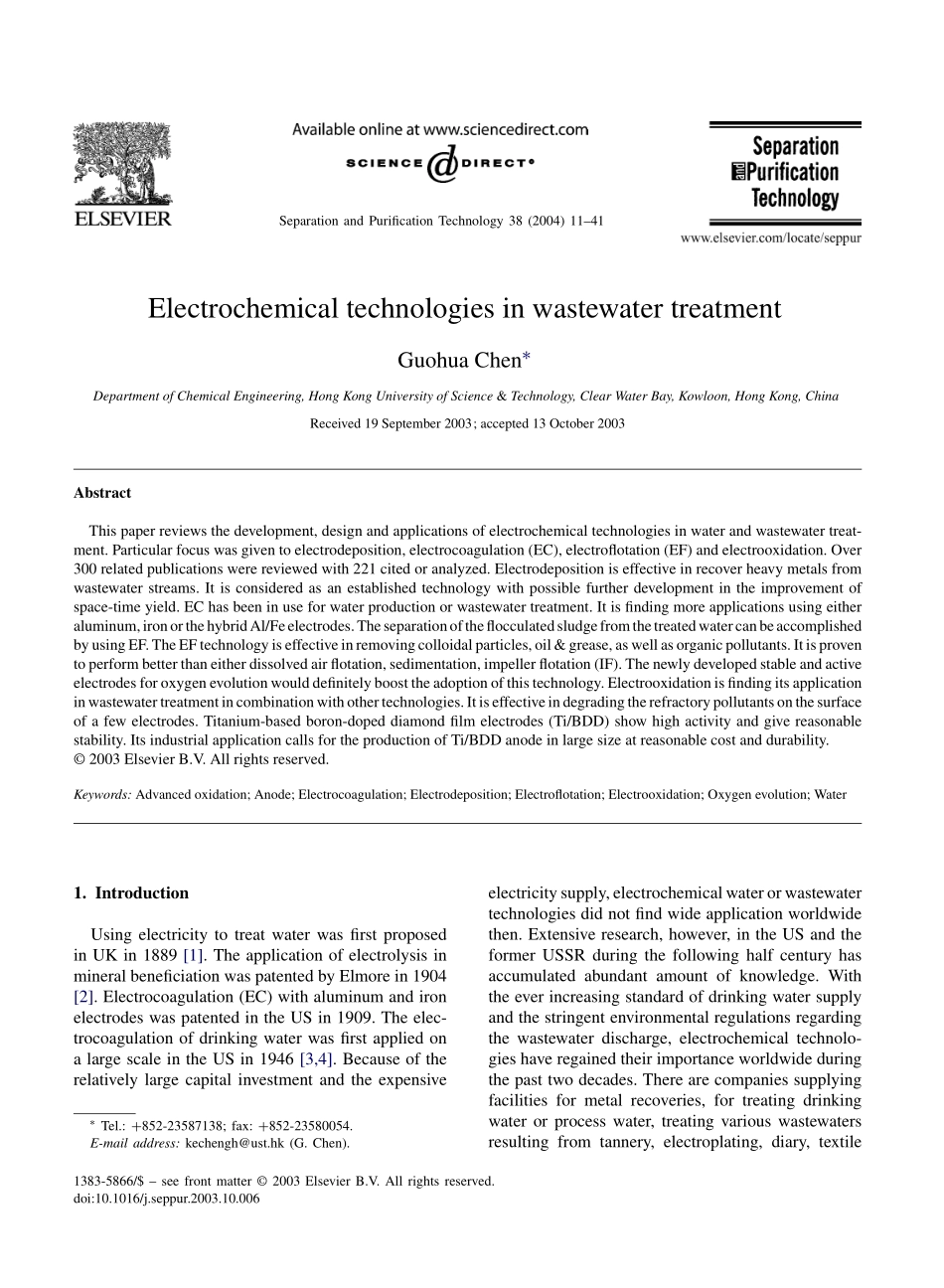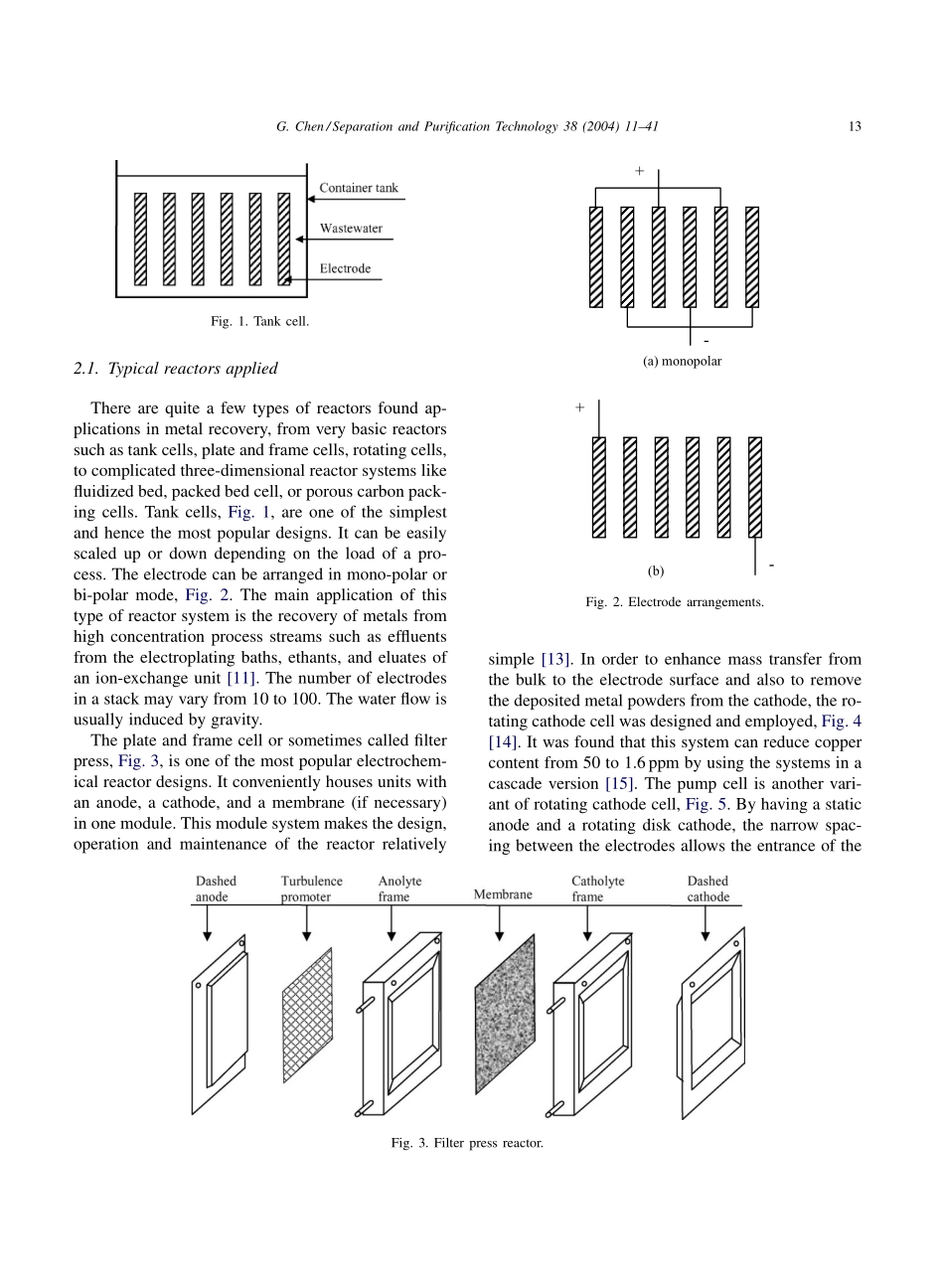Separation and Purification Technology 38 (2004) 11–41Electrochemical technologies in wastewater treatmentGuohua Chen∗Department of Chemical Engineering, Hong Kong University of Science & Technology, Clear Water Bay, Kowloon, Hong Kong, ChinaReceived 19 September 2003; accepted 13 October 2003AbstractThis paper reviews the development, design and applications of electrochemical technologies in water and wastewater treat-ment. Particular focus was given to electrodeposition, electrocoagulation (EC), electroflotation (EF) and electrooxidation. Over300 related publications were reviewed with 221 cited or analyzed. Electrodeposition is effective in recover heavy metals fromwastewater streams. It is considered as an established technology with possible further development in the improvement ofspace-time yield. EC has been in use for water production or wastewater treatment. It is finding more applications using eitheraluminum, iron or the hybrid Al/Fe electrodes. The separation of the flocculated sludge from the treated water can be accomplishedby using EF. The EF technology is effective in removing colloidal particles, oil & grease, as well as organic pollutants. It is provento perform better than either dissolved air flotation, sedimentation, impeller flotation (IF). The newly developed stable and activeelectrodes for oxygen evolution would definitely boost the adoption of this technology. Electrooxidation is finding its applicationin wastewater treatment in combination with other technologies. It is effective in degrading the refractory pollutants on the surfaceof a few electrodes. Titanium-based boron-doped diamond film electrodes (Ti/BDD) show high activity and give reasonablestability. Its industrial application calls for the production of Ti/BDD anode in large size at reasonable cost and durability.© 2003 Elsevier B.V. All rights reserved.Keywords: Advanced oxidation; Anode; Electrocoagulation; Electrodeposition; Electroflotation; Electrooxidation; Oxygen evolution; Water1. IntroductionUsing electricity to treat water was first proposedin UK in 1889 [1]. The application of electrolysis inmineral beneficiation was patented by Elmore in 1904[2]. Electrocoagulation (EC) with aluminum and ironelectrodes was patented in the US in 1909. The elec-trocoagulation of drinking water was first applied ona large scale in the US in 1946 [3,4]. Because of therelatively large capital investment and the expensive∗ Tel.: +852-23587138; fax: +852-23580054.E-mail address: kechengh@ust.hk (G. Chen).electricity supply, electrochemical water or wastewatertechnologies did not find wide application worldwidethen. Extensive research, however, in the US and theformer USSR during the following half century hasaccumulated abundant amount of knowledge. Withthe ever increasing standard of drinking water supplyand the stringent environmental regulations regardingthe wastewater discharge, electrochemical technolo-gies have rega...


